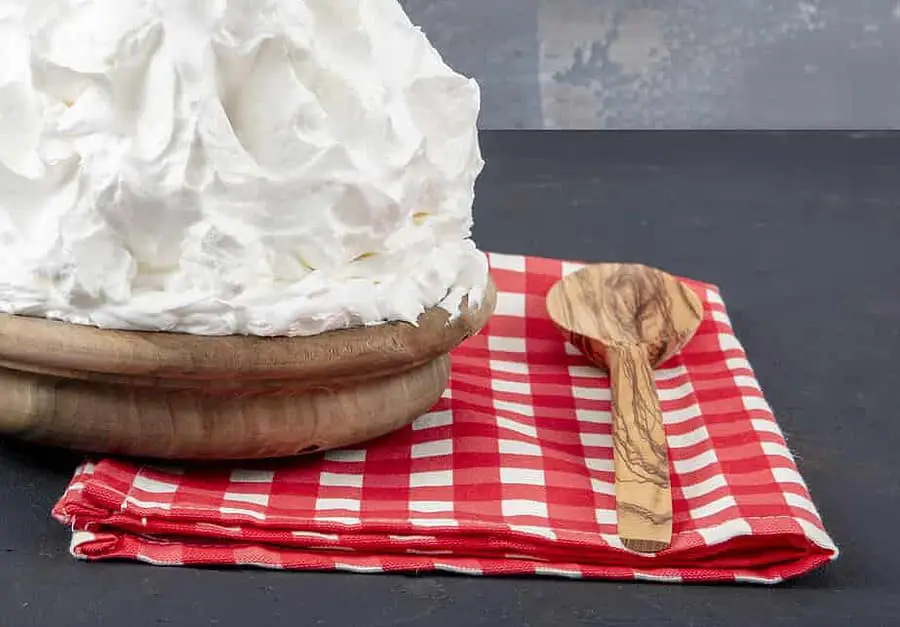Ah, the age-old debate: Cool Whip versus whipped cream.
You don’t have that debate? Oh, maybe it’s just me!
But if you have, you might have found yourself caught in the crossfire of this delightful dilemma, wondering which of these fluffy toppings is the real champion.
No need to worry, we’ve got you covered!
In this article, we’ll dive into the luscious world of these creamy contenders, compare their key differences, and help you decide which one truly takes the cake.
The primary differences between Cool Whip and whipped cream lie in their ingredients, taste, and texture. It’s important to know these distinctions when choosing the perfect dollop for your dessert. Cool Whip, an imitation whipped cream, is known for its long shelf life and stable, light texture. On the flip side, whipped cream is a rich and natural option, made from just a few simple ingredients. Both have their own unique charm, but their properties and uses differ significantly in the culinary world.
By the end of this article, you’ll have a clear understanding of these cloud-like confections and be well-equipped to make an informed decision for your next treat!
History/Origins of Cool Whip
The geniuses at General Foods (now part of Kraft Heinz) concocted this whipped marvel back in 1966. The mastermind behind the formula was the food chemist named William A. Mitchell. If that name rings a bell, it should—he’s also the man who brought you other iconic inventions like Tang and Pop Rocks.
He was quite the maverick in his day!
Cool Whip was launched to compete with traditional whipped cream, offering a longer shelf life and more convenience. Eager to stand out, the creators focused on presenting it as a non-dairy alternative to whipped cream.
This appealed to lactose-intolerant folks and those looking for a lower-fat option. Assembled from hydrogenated vegetable oil, high-fructose corn syrup, and other ingredients preferred in mid-20th-century food science, it quickly gained a following.
In its early years, Cool Whip experienced staggering success. Sales skyrocketed, and a whole generation of dessert-lovers welcomed this easy-to-use, affordable topping into their homes. Fun fact: by 1975, Cool Whip was so popular, it even found itself a spot on Apollo-Soyuz’s dining menu.
That’s right—this dessert companion made it to outer space!
Over the years, Cool Whip has continued to adapt to consumer preferences. Nowadays, you’ll find it in various forms, such as sugar-free, extra creamy, and even seasonal flavors. It’s garnished everything from pumpkin pies to hot cocoa, embedding itself in countless cherished memories along the way.
And there you have it—your quick trip through Cool Whip’s engaging history. Next time you dollop a spoonful on your favorite treat, take a moment to appreciate the innovative minds that brought you this scrumptious, versatile invention.
Happy indulging!
History/Origins of Whipped Cream
It’s difficult to imagine a dessert that doesn’t benefit from a dollop of this airy delight. The history of whipped cream, just like its texture, is light and fascinating.
To satisfy your curiosity, whipped cream has roots in Europe, dating back as early as the 16th century. The French and the Italians both claim their foray into whipping cream first. Regardless of the true pioneer, there exists records of fluffy delights enjoyed by aristocrats and royals alike during these times.
The pivotal ingredient in this confectionary adventure is ‘syllabub.’ Syllabub, a frothy mixture of cream, sweet wine, and sugar, populated the tables of European elites throughout history. Whipping this delightful concoction elevated the humble cream into a cloud-like dessert topping we all relish today.
Fast forward to the 19th century, when nitrous oxide – a wondrous gas – was discovered. In a serendipitous twist, this discovery further refined whipped cream’s charm.
The process of making whipped cream became more efficient when, in the mid-20th century, the clever food scientist Aaron Lapin invented the whipped cream dispenser. This nifty gadget propelled whipped cream into the party staple it is today.
Differences in Ingredients
To begin, let’s consider the star ingredient. In whipped cream, the primary component is—you guessed it—cream. Containing at least 30% fat, heavy cream is whipped to introduce air, resulting in a thick and luscious texture. While being high in calories, real dairy cream offers a genuine, rich flavor.
On the other hand, Cool Whip is a non-dairy alternative created with water, hydrogenated vegetable oil, high fructose corn syrup, and other additives. This concoction yields a shelf-stable, lower-calorie product with a stable, airy texture. Even though it’s a convenient option, Cool Whip is typically not as natural or authentic in flavor as its dairy counterpart.
Differences in Preparation
Cool Whip
In preparing Cool Whip, you simply need to unseal the packaging and voila! You have your light, airy topping waiting to embellish your dessert. Since it’s a prepackaged product, there’s no inconvenient whisking or whipping involved. You can just scoop it out and indulge your taste buds.
Whipped Cream
On the other hand, whipped cream requires a little more effort, but rest assured, the results can be well worth it. To craft this delightful treat, you’ll need to mix heavy cream, a sweetener of your choice (commonly sugar), and vanilla extract.
When the ingredients are combined, use a hand mixer, stand mixer, or even a simple whisk to aerate the cream until soft peaks form. You’ll soon have a fluffy, velvety creation to elevate your dessert.
If you desire a customized touch, whipped cream is your ideal choice! Here are a few ways to modify it:
- Infuse with distinct flavors (e.g., liqueurs, extracts, citrus zest)
- Use alternative sweeteners (e.g., maple syrup, honey)
- Adjust texture to your preference (from soft and billowy to more structured peaks)
Differences in Taste and Texture
Cool Whip
Dive into the flavor realm of Cool Whip, and you’ll find it undeniably sweet. The unmistakable zing of artificial sweetness entices your taste buds, laced with subtle undertones of vanilla. But, don’t be deceived by its remarkable resemblance to whipped cream; it’s an entirely different taste experience.
Whipped Cream
On the flip side, whipped cream offers an exquisite balance in flavor that embodies a more natural sweetness. It’s a soothing medley of smooth dairy and light sugar harmonizing on your palate. With the added advantage of versatility, you can customize the taste by adjusting the amount of sugar or even adding a little booze to create a phenomenal enhancement to your favorite dessert.
Cool Whip’s uncanny consistency captivates your senses, all thanks to its enduring stability means it won’t wilt or weep on your plate, retaining its integrity even on a hot summer day.
With the simple yet elegant elements of heavy cream and sugar, whipped cream has an authentic richness as it melts instantly on contact. Though slightly less resilient than Cool Whip, it delivers a sumptuous sensation on your tongue that few can resist.
| Cool Whip | Whipped Cream | |
|---|---|---|
| History and Origins | Invented by General Foods in 1966 | Originated in Europe, dating back to the 16th century |
| Primary Ingredient | Hydrogenated vegetable oil, additives | Cream |
| Flavor | Sweet, artificial with hints of vanilla | Natural sweetness, creamy and customizable |
| Preparation Method | Ready-to-use, no whisking required | Whisk heavy cream with sugar and vanilla extract |
| Texture | Stable, airy texture | Fluffy, velvety texture |
| Convenience | Convenient, longer shelf life | Requires preparation but offers customization options |
| Taste Differences | Artificial sweetness, distinct from whipped cream | Natural sweetness, smooth dairy flavor |
| Texture Differences | Enduring stability, won’t wilt or weep | Melts instantly, delivers a sumptuous sensation |

Hiya! I’m Kimberly, a contributing writer here at Miss Buttercup. I was born and raised in the UP, Michigan’s Upper Peninsula for those who don’t know, the land of beautiful, beach-filled sunny summer days and bone-chilling long winters. Growing up there made me appreciate all the little things about life, especially the way a delicious meal can bring people closer together. I try and put that same feeling into each article I write and I hope it comes across that way!

